第80章 11(1)
We have now done with such sanguineous animals as live on land and bring forth their young alive; and, having dealt with all their main kinds, we may pass on to such sanguineous animals as are oviparous. Of these some have four feet, while others have none. The latter form a single genus, namely the Serpents; and why these are apodous has been already explained in the dissertation on Animal Progression.
Irrespective of this absence of feet, serpents resemble the oviparous quadrupeds in their conformation.
In all these animals there is a head with its component parts; its presence being determined by the same causes as obtain in the case of other sanguineous animals; and in all, with the single exception of the river crocodile, there is a tongue inside the mouth. In this one exception there would seem to be no actual tongue, but merely a space left vacant for it. The reason is that a crocodile is in a way a land-animal and a water-animal combined. In its character of land-animal it has a space for a tongue; but in its character of water-animal it is without the tongue itself. For in some fishes, as has already been mentioned, there is no appearance whatsoever of a tongue, unless the mouth be stretched open very widely indeed; while in others it is indistinctly separated from the rest of the mouth. The reason for this is that a tongue would be of but little service to such animals, seeing that they are unable to chew their food or to taste it before swallowing, the pleasurable sensations they derive from it being limited to the act of deglutition. For it is in their passage down the gullet that solid edibles cause enjoyment, while it is by the tongue that the savour of fluids is perceived. Thus it is during deglutition that the oiliness, the heat, and other such qualities of food are recognized; and, in fact, the satisfaction from most solid edibles and dainties is derived almost entirely from the dilatation of the oesophagus during deglutition. This sensation, then, belongs even to animals that have no tongue, but while other animals have in addition the sensations of taste, tongueless animals have, we may say, no other satisfaction than it. What has now been said explains why intemperance as regards drinks and savoury fluids does not go hand in hand with intemperance as regards eating and solid relishes.
In some oviparous quadrupeds, namely in lizards, the tongue is bifid, as also it is in serpents, and its terminal divisions are of hair-like fineness, as has already been described. (Seals also have a forked tongue.) This it is which accounts for all these animals being so fond of dainty food. The teeth in the four-footed Ovipara are of the sharp interfitting kind, like the teeth of fishes. The organs of all the senses are present and resemble those of other animals.
Thus there are nostrils for smell, eves for vision, and ears for hearing. The latter organs, however, do not project from the sides of the head, but consist simply of the duct, as also is the case in birds. This is due in both cases to the hardness of the integument; birds having their bodies covered with feathers, and these oviparous quadrupeds with horny plates. These plates are equivalent to scales, but of a harder character. This is manifest in tortoises and river crocodiles, and also in the large serpents. For here the plates become stronger than the bones, being seemingly of the same substance as these.
These animals have no upper eyelid, but close the eye with the lower lid In this they resemble birds, and the reason is the same as was assigned in their case. Among birds there are some that can not only thus close the eye, but can also blink by means of a membrane which comes from its corner. But none of the oviparous quadrupeds blink; for their eyes are harder than those of birds. The reason for this is that keen vision and far-sightedness are of very considerable service to birds, flying as they do in the air, whereas they would be of comparatively small use to the oviparous quadrupeds, seeing that they are all of troglodytic habits.
Of the two separate portions which constitute the head, namely the upper part and the lower jaw, the latter in man and in the viviparous quadrupeds moves not only upwards and downwards, but also from side to side; while in fishes, and birds and oviparous quadrupeds, the only movement is up and down. The reason is that this latter movement is the one required in biting and dividing food, while the lateral movement serve to reduce substances to a pulp.